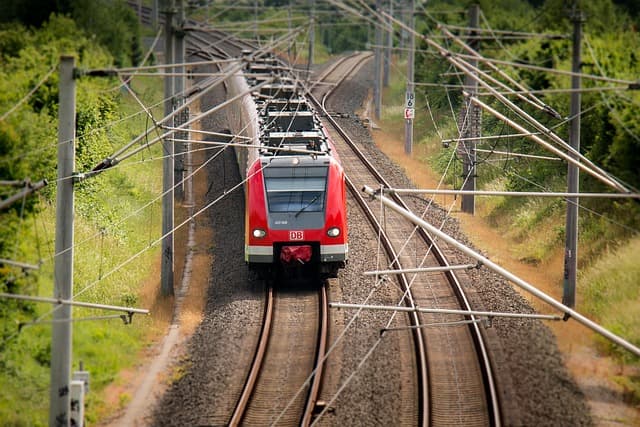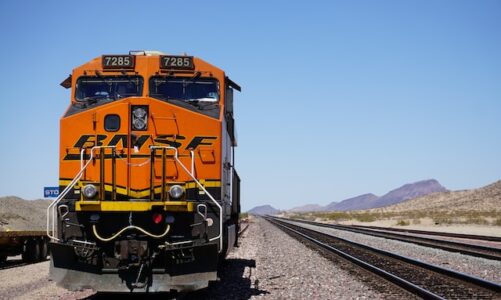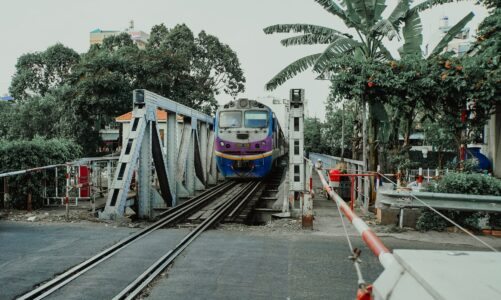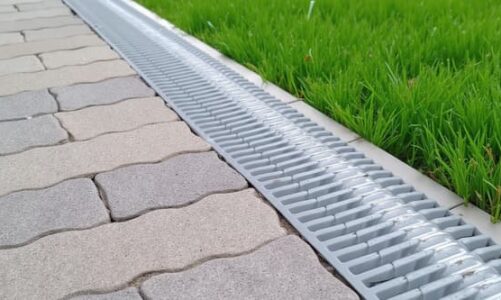U.S. railroads are reclaiming their status as the main transportation artery of the United States.
Railroads are booming, and not just in North Platte. Thanks to changes in technology, rising diesel prices and improved delivery speeds, more and more freight is moving from the highways to the railroads: trains need only one gallon of fuel to move a ton of goods 500 miles. The number of shipments on Union Pacific has increased from 133,000 to 180,000 tons since 2009. The company’s stock price has risen 350% since 2009, with competitors Kansas City Southern and Canadian Pacific having doubled their share prices.
Industry revenues have risen 19% to $80.6 billion since 2009, and 10,000 new railroad jobs have been created and countless in related industries. The Federal Railroad Administration predicts that by 2035, the volume of freight carried by U.S. railroads will grow by 22%.
Breakthrough Destination
All of this leads to billions of dollars of investment in new railroad and infrastructure developments not seen in America since the construction of the transcontinental railroad. Today, thousands of state-of-the-art locomotives – far more fuel-efficient and less polluting than those that came before – are running on American railroads.
But most importantly, the boom occurred in an industry that takes nothing from taxpayers. That includes $20 billion in annual infrastructure spending, including $3 billion for a powerful mandatory safety improvement program known as Positive Train Control. What a contrast to America’s highways, which receive $40 billion in federal subsidies each year!
Of course, not everything is perfect here. Last year, freight traffic was lower because of stagnation in the coal and other industries. The railroads have been modernized, but so have ideas about safety and environmental preservation, especially after a string of deadly explosions on oil trains. It is already clear that the success of railroads is not a short-term tribute to fashion. There are many signs that we are in the early stages of an amazing industry renaissance.
The train that’s going away.
Investors have put a rush on the stock of railroad companies such as Carl Icahn’s American Railcar Industries.
America’s second railroad boom began with tragedy. On a sunny September day in 2008, a driver operating a commuter train in California was distracted by sms, ran a red light and crashed into a UP freight train. The driver and 24 passengers were killed and 135 others were injured. It was the worst railroad disaster in nearly twenty years. As early as October, Congress passed the Railroad Safety Improvement Act, requiring companies to pay for, build and implement a new, safer traffic control system by 2015. The law required UP alone to retrofit an average of 2.5 locomotives and 10 miles of railroad track per day for seven years.
The new system revolutionized freight transportation because it allowed railroads to locate locomotives to within a yard (and with remote access to stop a train if a driver ignored the signal). Not only was it safer, it was also more efficient: previously trains would stop at every red semaphore, but the system would allow drivers to know ahead of time about scheduled stops and simply reduce speed to a level where they would not have to stop completely and then burn more fuel coming off the track.
The increase in efficiency has coincided with improved economics. The price of diesel fuel began to approach $4 a gallon again, so orders began to rise and the cost of the traffic control system was no longer perceived as a heavy burden.
Ironically, the main development in railroad transportation has been precisely related to oil transportation. The energy boom has benefited railroads, especially where oil reservoirs are located in places where there are no pipelines, such as Bakken, North Dakota. EOG Resources ordered the first train to transport crude oil from Bakken in 2009. Now BNSF alone carries 600,000 barrels (that’s enough crude in refined form to fill 1.3 million tank cars). BNSF now has 10,000 tank cars designed to carry oil. “We’re on our way to having our railroads carry 1 million barrels a day,” says BNSF Chairman Matt Rose. – “We’re experiencing the kind of growth I’ve never seen in my entire career.
The railroads transport more than just crude oil. For each new field oil companies order 40 cars of materials. There is gravel and concrete to build the base of drilling rigs. And hydraulic fracturing requires hundreds of tons of sand, which is poured into the wells, thus preventing oil and gas from escaping. Most of this sand is transported by rail from quarries in Wisconsin.
The locomotive of the industry
A new generation of railroading is taking shape in a shiny white building in Fort Worth, Texas. GE Transportation, a subsidiary of General Electric, is headquartered here. GE has been building locomotives in a huge complex in Erie, Pennsylvania, that employs 5,000 people for more than a century. But the Fort Worth plant, which opened in January 2013 in response to increased demand, is 20 percent more efficient.
Four new locomotives leave here every week (with plans to increase production to five in the second quarter). There is bright lighting and fresh air, and the ceilings are so high that the locomotives can be turned upside down to install the wheels. Using huge cranes, 400 trim GE employees, in stylish black polo shirts and often with iPads in hand, assemble the locomotives from parts like children with a Lego set, moving five pre-assembled modules on a 73-foot-long steel platform. The 12-cylinder engines come here from GE’s Grove City, Pennsylvania plant, the generators from the Erie factory, and the combined traction engines from GE’s Mexico City facility.
These two-hundred-twenty-ton power plants on wheels look majestic. But in addition, GE locomotives – just like their competitors produced by Caterpillar, Siemens, and Bombardier – are smart: they are stuffed with 250 sensors and two dozen microprocessors. By analyzing massive amounts of information, GE is helping railroads and their customers increase productivity, reduce fuel consumption and minimize downtime. RailConnect 360, GE’s new monitoring and diagnostic software, can even predict train breakdowns.
Case in point – trains wriggling through hilly terrain are like toys on springs. When the train goes up the hill, the cars stretch; when the train goes down, they almost overlap one another. Trip Optimizer, GE Transportation’s new smart speed stabilizer system, detects the slope of the hill, the length and weight of the train, its grade and braking distance. It then automatically adjusts the speed of the train to maximize efficiency and minimize fuel consumption.
The information comes from GPS, from topographic maps of the laid track and from sensors mounted on locomotives. All of them work according to complex algorithms of train control. The control is not fully automated, as it is in some passenger trains (for example, in the Paris subway), the entire process is controlled by the driver. However, the system is smart enough to detect that a turn is approaching, or that some of the rails are busy, and automatically slow down to soften the springiness.
The system is already installed on 2,500 locomotives on eight railroads in North America, Australia and Brazil. GE reports that customers have saved 3% to 17% fuel, depending on the type of train and topography. The company says Trip Optimizer-equipped locomotives have already traveled 100,000,000 miles, saving 25 million gallons of diesel fuel. Norfolk Southern estimates that increasing rail speeds by at least one mile per hour would save the company more than $200 million a year.
GE is also testing new technology that should help marshalling yard managers get the right cars to the right trains faster. Currently, cars are idle about 40 percent of the time. Such low productivity pisses off customers like Ford Motor, whose general manager Mark Fields, after his cars began piling up in parking lots waiting for locomotives to take them to dealers, met with railroad officials last year and asked for a higher turnover rate. According to Ford officials, the problem has been solved.
GE’s attention is now focused on the fuel problem, and the company wants to release a new line of locomotives that can run on liquefied natural gas and save up to 50 percent on diesel fuel at the former price. This is critical because their main competitors, truck fleets, are already switching to cheaper natural gas. BNSF and Canadian National are already trying converted natural gas on trains across North America.



